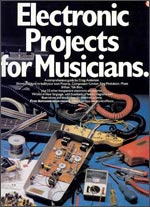 Title: Electronic Projects for Musicians
Title: Electronic Projects for Musicians| Link type | Link | Password |
|---|---|---|
| Book | http://rapidshare.com/files/85181520/C511FB14-41DD-473B-8389-8503233899C1.rar | www.freebookspot.com |
| Mirror | http://mihd.net/o7sqwm | www.freebookspot.com |
| Fast | http://kewlshare.com/dl/7f75a0ea3b3d/Pro_eBook_157.rar.html | |
| Slow | http://www.filefactory.com/file/b15d1ab/n/Pro_eBook_157.rar | |
| Book | http://uploading.com/files/d23a9b99/0825695023%2BPro%2BeBook%2B157.rar/ |